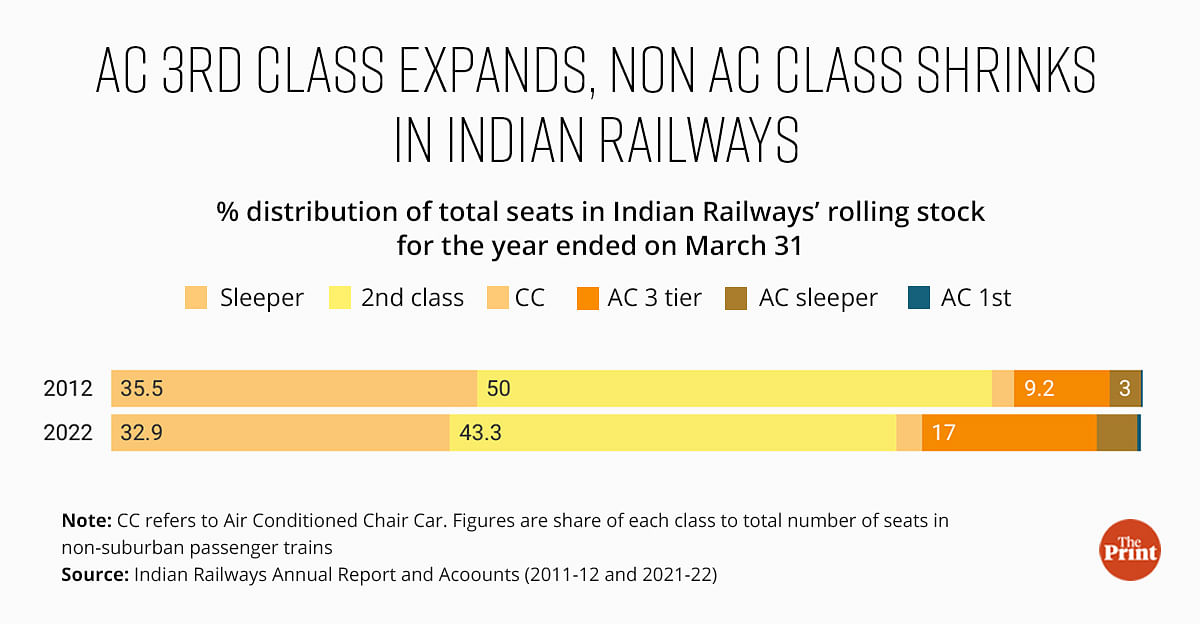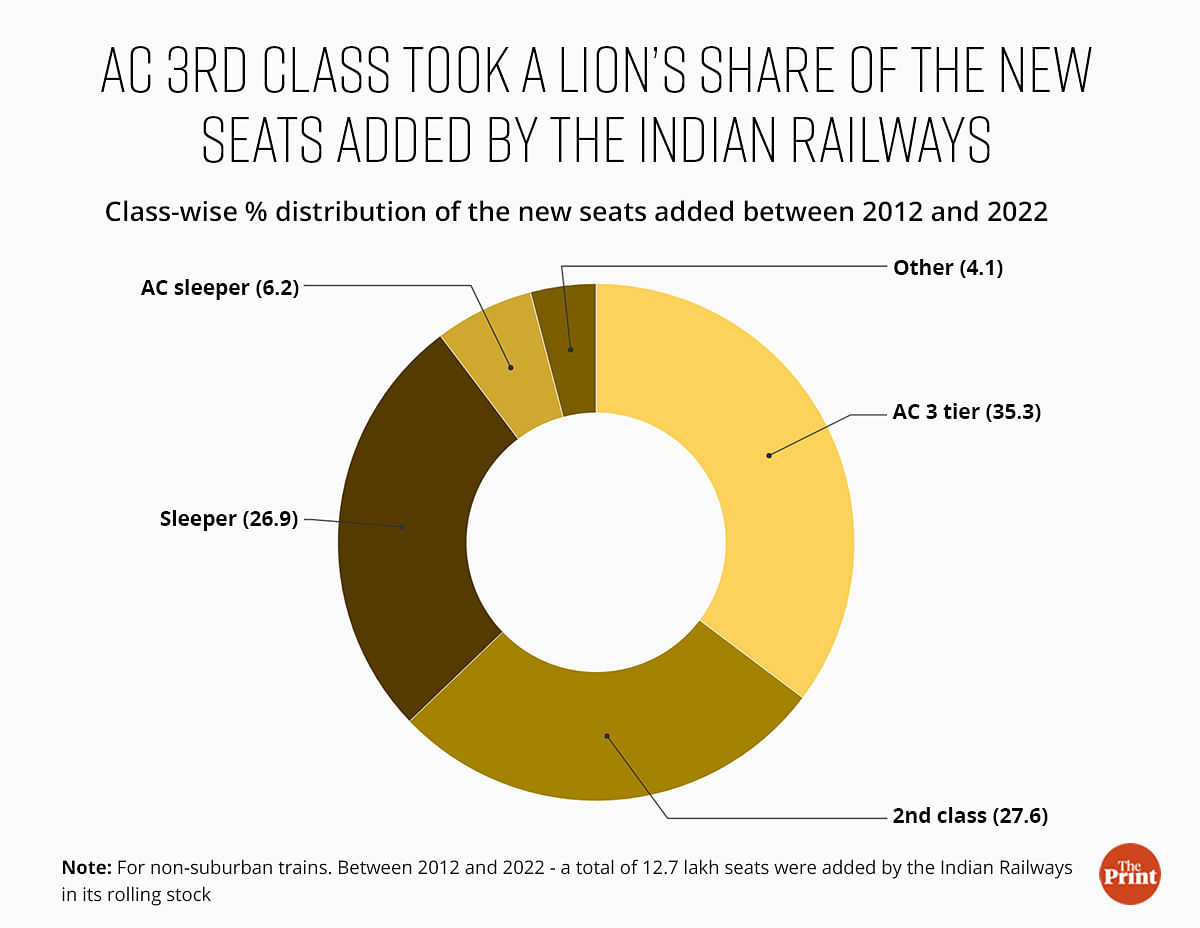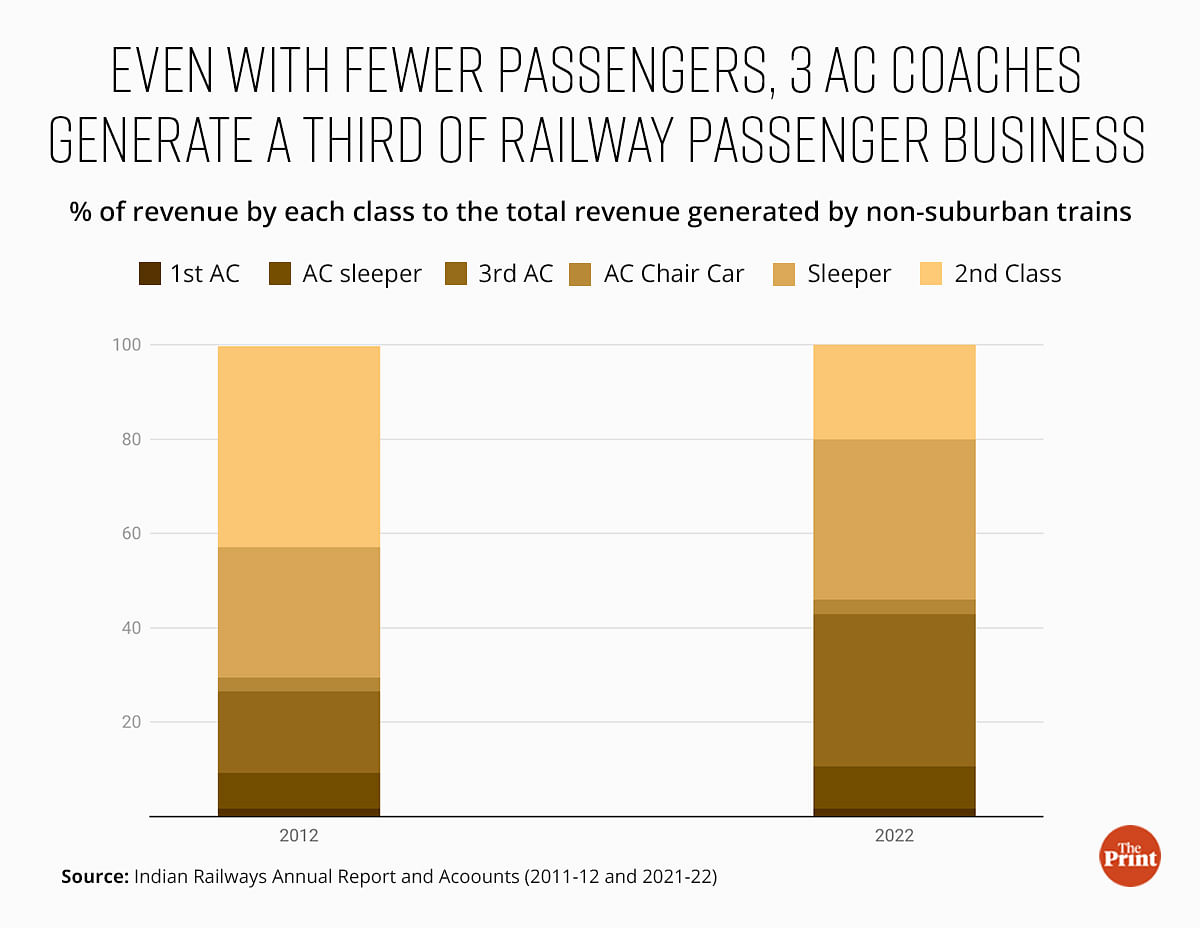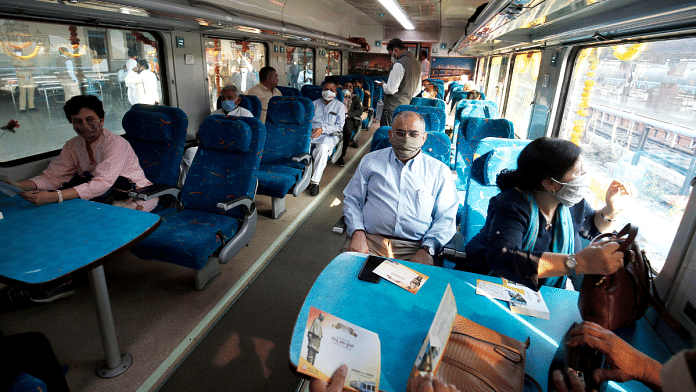Rome: Ever wondered why train tickets for sleeper class — the most common choice of travel for the masses — are tough to get? Turns out that the Indian Railways has added capacity in AC seating at a faster rate over the last decade, than in the non-AC category.
An analysis by ThePrint has found that seats available in the air conditioned compartments of non-suburban trains have jumped by a whopping 133 percent over the 10 years from 2012 to 2022, while the overall number of seats have increased by just 42.6 percent. This shift, in turn, is gradually changing the profile of the people travelling by trains.
Train journey by air-conditioned coaches can be done in AC first class, AC 2-tier, AC 3-tier, AC 3-tier economy, AC chair car (CC) among others.

According to the Ministry of Railways’ Annual Statistical Statements, the rolling stock — all the engines and carriages that are used on a railway — of seats in the AC 3-tier has jumped from 2.7 lakh by the year ended March 2012 to about 7.2 lakh by March 2022, or about 163 percent jump.
Similarly, the number of seats in the air conditioned sleeper (AC 2-tier) is also up from 0.89 lakh in 2012 to 1.6 lakh (a growth of 89 percent) in 2022. The number of seats available in the First AC coaches was up from 6,070 to about 14,700 — a 143 percent increase — in the same period.
Seats in AC chair car coaches, which feature in trains like Shatabdi Express, Vande Bharat Express, have gone up by 66 percent from 65,000 to 1.08 lakh.
In contrast, such rate of increase in seating was not noticed in the data on the non-AC compartments, which usually carry the bulk of railway passengers — either those who cannot afford AC travel, or those who cannot get a confirmed ticket of non-suburban trains.
The sleeper class had 10.59 lakh berths in 2012, which increased by about 32 percent to 14 lakh by 2022. Similarly, the number of seats in the second class has increased by about 23 percent, from about 15 lakh in 2012 to 18.4 lakh by 2022.
To put it in other words, the data shows the largest share of additional seats that the Indian Railways has added from 2012 to 2022 is the air conditioned 3-tier class.
Consider these numbers: Of the 12.7 lakh seats added over these 10 years (in non-suburban trains), more than one-third (4.48 lakh) went to AC 3-tier coaches. Similarly, the second and sleeper classes saw addition of 3.5 lakh seats and about 3.4 lakh seats, respectively.

According to the annual reports and accounts of the Indian Railways, the national transporter ferried 1.35 billion passengers on non-suburban trains in the financial 2021-2022.
In 2012, second class passengers formed about 88 percent of the total passengers in non-suburban trains, which fell to 66 percent by 2022.
The sleeper class accounted for 8.6 percent of the total passengers in 2012, which jumped to 21.76 percent by 2022. The passenger traffic in AC 3-tier rose from 1.5 percent to 7.6 percent in those 10 years.
Also Read: CAG report flags Railways’ worst-ever operating ratio in FY22. Rs 100 earned for every Rs 107 spent
Money matters
So, why is the AC 3-tier recording such a steep rise in both seat availability and passenger share? The answer lies in the finances.
Despite being low in terms of share of seats and even lower in the share of passenger traffic, the 3rd AC is a lucrative option for the Indian Railways as it earns a disproportionate amount of revenues compared to the non-AC classes.

Even by catering to just 7.6 percent of the passengers and constituting 19 percent of the train seats, the 3rd AC is responsible for almost one-third of the railways’ passenger revenue (in non-suburban business).
In 2022, the Indian Railways earned Rs 37,855.42 crore from passenger business in non-suburban journeys, of which Rs 12,225 crore (32.3 percent) came from the 3rd AC class — a significantly higher share than Rs 4,523.94 crore (17 percent) in 2012.
Correspondingly, the share of revenue from sleeper (Rs 7,261.53 crore) and second class (Rs 11,207.55 crore) has fallen from 70.2 percent in 2012 to just 54 percent by 2022.
On Wednesday, Railway Minister Ashwini Vaishnaw dismissed reports that the number of non-AC coaches has been reduced. “We have around 60,000 train coaches, out of which 40,000 are non-AC, which is a significant number,” Vaishnaw was quoted as saying by PTI.
Also Read: Indian Railways only chugging along, a new business plan could put it on superfast track



